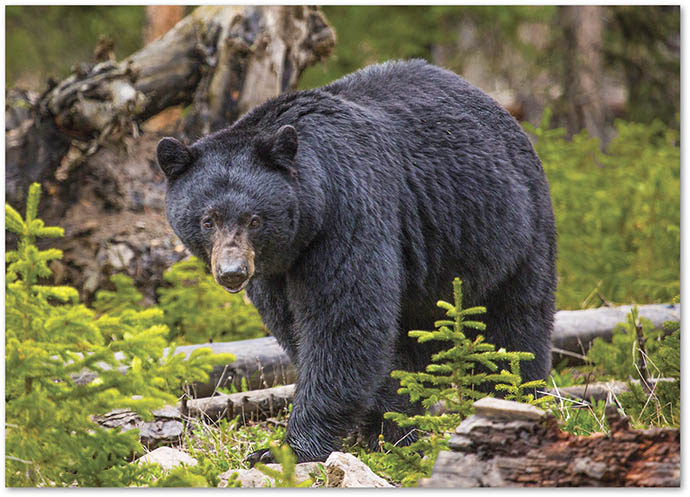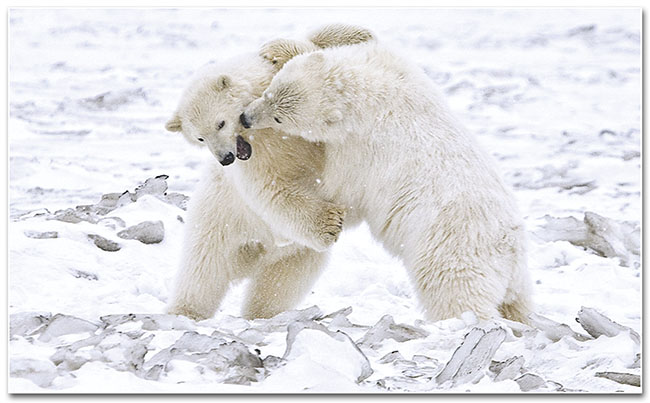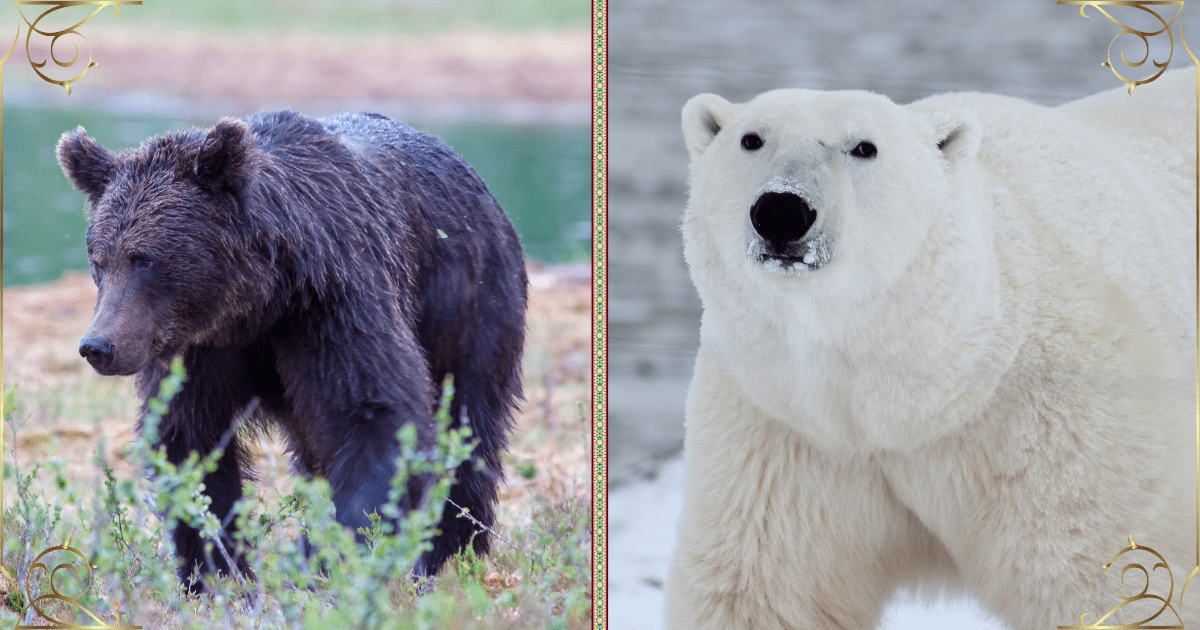Do You Want to Overcome Temptations?
The “polar bear” or “black bear” reaction? The choice is in your hands… But it might help you to read this article first.

Anyone walking through the boreal forests, whether in Siberia, Canada or the Nordic countries of Europe, is likely to come upon a huge, very furry and always hungry animal: the bear.
In children’s representations, bears are typically presented as charming and even endearing creature, but when faced with one of them, completely opposite adjectives are likely to spring to mind… underscored by the most primal reactions of the instinct for self-preservation!
Their strategies of attack, ways of living and feeding vary between species.
The polar bear is the fiercest hunter and, as living beings are scarce at the North Pole, God has endowed it with a keen “astuteness”: to camouflage itself from its prey in the white landscape, it covers its black nose with its very white paws. So well does it resemble a mountain of snow that the victim only notices it too late… The polar bear stands out as an agile sprinter and an excellent swimmer! So if you come across one, don’t think twice before fleeing!
The black bear, on the other hand, has a much wider distribution. It is found in many nature reserves and forests close to inhabited areas. Although a carnivore, it only attacks humans when it feels threatened. Nevertheless, it is a very strong animal, capable of felling trees while making its way through the forest, and is therefore a danger to our species.
If you have the misfortune of meeting up with a black bear, please take my advice: do not run away immediately, but remain calm and stare at it for a while. It will be baffled and leave. If, on the other hand, you run, you will be chased and seriously injured at the very least, if not killed.
The reader is probably thinking that all this data would fit better in a scientific journal or on the lips of a zoologist… But keep reading.
St. Bonaventure says that the Eternal Father has given us three books to learn from: the book of creation, the incarnate book – Jesus Christ – and the book of salvation history. In the first book we can learn of the two different attitudes that we must take in the face of temptation.

You yourself, dear reader, will judge the following cases and decide which way to proceed: with the “polar bear” reaction or the “black bear” reaction.
When the alarm clock goes off in the morning and I feel the urge to go back to sleep, what should I do: flee from the temptation, covering my head with the blanket and going back to sleep – the “polar bear” reaction; or confront my laziness, look the situation in the face and energetically get out of bed – the “black bear” reaction.
What should my behaviour be in a different circumstance, such as in a circle of friends, at work or in a restaurant, when I need to manifest my faith, whether through the Sign of the Cross, a prayer or an assured and clear response to an inquiry about my religion, and I feel reluctant to confess it? Should I confront the shame – “black bear” – or do I have the right to evade it – “polar bear” – and let them mock my cowardice?
On the other hand, when I watch television and encounter scenes that are not in keeping with Catholic morality, should I face the temptations to purity as they present themselves – “black bear” reaction – or simply flee from this occasion of sin – “polar bear” reaction – by turning off the television?
These are some lessons from the book of creation!
The incarnate book taught us to watch and pray so as not to fall into temptation (cf. Mt 26:41). And what do we find in the book of salvation history? Every one of its pages proclaims: never was it known that any devotee of Mary Most Holy was left unaided.
Therefore, in moments of temptation, let us wisely judge the best course of action, asking Heaven for the strength to overcome obstacles, full of confidence that Our Lady will help us, will shelter us under her mantle, and thus we will emerge victorious from the struggle against evil.

